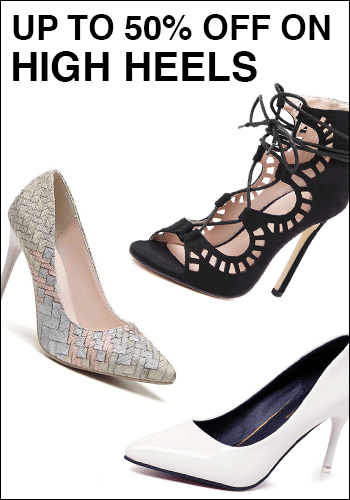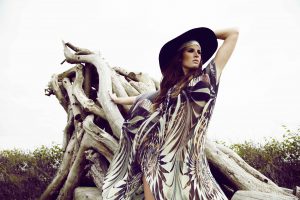There are two popular theories on the meaning of the word ‘Boho’. Some people will claim it is just a shortened version of ‘bohemian’, a distinct style of living and dressing which was born around 200 years ago; while others believe it is a combination of ‘bo’ from bohemian and ‘ho’ from hobo – a now old fashioned American term used to describe tramps or vagrants. Either way both made sense at some point in history, although the bohemian look today is less radical than it was when it first gained its label.
The origins of all things bohemian
Technically, Bohemians are those born in the region of Bohemia in the Czech Republic. Most of these people were from the gypsy or Romany community, and had little social status either in their home country or abroad. Believed to be con artists, beggars, thieves and other forms of lowlife, their lives were shaped by poverty, poor housing and inadequate clothes. Although they were completely unconnected to the creative and artistic folk who bonded in post-revolution Paris when the financial support of their upper class patrons disappeared – the term was considered fitting for these suddenly, and tragically, poor writers, artists and musicians.
Living on the fringe of society, outside the rules and regulations which keep daily life pretty controlled and predictable, isn’t always easy, but as a group they maintained their way of life; refusing to conform, and instead using fashion and lifestyle to protest against the inequalities of the time. They may have had unconventional lives but they were happy, and free, and many ordinary folk envied them that.
What was boho style way back when?
The original French bohemians have left behind a fashion legacy which is still incredibly popular today, even though the symbolism of their materials, designs and styles is not generally as significant. The key features of bohemian fashion tend to be comfort, loose or flowing cuts, ethnic prints, and outfits which mix and match colours and fabrics in an unconventional way. Bohemians had more to do than iron, and they often wore things well past their best, or made do with recycled items. These things were all quite shocking and almost unheard of at that time, but they got away with it. Perhaps the fact that these daring and unusual fashion choices always somehow looked so chic and elegant helped?
More modern interpretations of boho style
Every generation has adapted the basics of bohemian style to suit their particular tastes and social influences, and as time passes this has moved boho style closer and closer to being a strand of mainstream modern fashion. In the 21st century boho chic is still incredibly popular, most likely because it is both easy to wear and looks so good.
Abandoning corsets was just as shocking to mainstream society in the Victorian era as going without a bra was in the 1960s. Both are good examples of how Bohemian ideals influenced fashion choices, and back then both beatnik and hippy dress codes represented the true nature of bohemian ideals, as had their Victorian ancestors.
Throughout the ‘70s fashion adopted the kaftan, peasant skirt and gypsy blouse, mostly made with natural fabrics and lots of material. These items sat comfortably with the flowery tunics and wide legged trousers of that decade, then morphed into the next to be paired with unusual matches like hacking jackets. Soon it was ruffles and lace which dominated shop rails, matched with ever popular over-sized jewellery items, while multi bangled arms were the norm. [They still are!!]
21st century boho trends
Although more mainstream, the influence of bohemian culture on modern fashion is as clear as ever. Charity shops are booming, clashing colours and patterns are no longer something to be avoided, layering is more than fine, and both ethnic tunics and floaty cotton dresses feature alongside updated harem pants as consistent bestsellers. Popular young stars like Sienna Miller fuelled the craving for boho chic, combining cowboy boots with cotton skirts and hand embroidered jackets. Leggings booted jeans off the top spot for leisure wear, while maxi dresses appear in various forms every summer without fail.
Perhaps the most exciting development of modern bohemian fashion is the way contemporary tastes have influenced designs, leading to a wider range of ready to wear clothes which really do offer something for everyone. Lace is still huge, often incorporated as detail into the design of a short shift dress to add an extra edge, and some items blend fitted bodices with flowing skirts to add a little glamour and enjoy the best of both worlds. Crochet, beads and mesh find their way into or onto blouses, tops and jackets, often on oversized or batwing sleeves and other unusual features. Shoulders can be exposed in full or part, or completely covered in all kinds of material. Sheer and subtle, comfortable but sexy and fun; all in all the list of exciting modern interpretations of bohemian fashion seems to be never ending.
Wear it your way
Once upon a time bohemian fashion reflected struggles, statements and conflict. These days it has settled into something less confrontational, but the sheer freedom of choice it offers today could not have happened had it not been for those distant ancestors who developed and maintained a voice in society through the way they styled themselves within it.
News on future bohemian fashion inspiration includes whispers of jewels, primary colours, draping and ‘borrowing’ from ethnic cultures, as well as the blurring of gender line, more fake fur and a major focus on headwear. Hold on to your hats!





Recent Comments